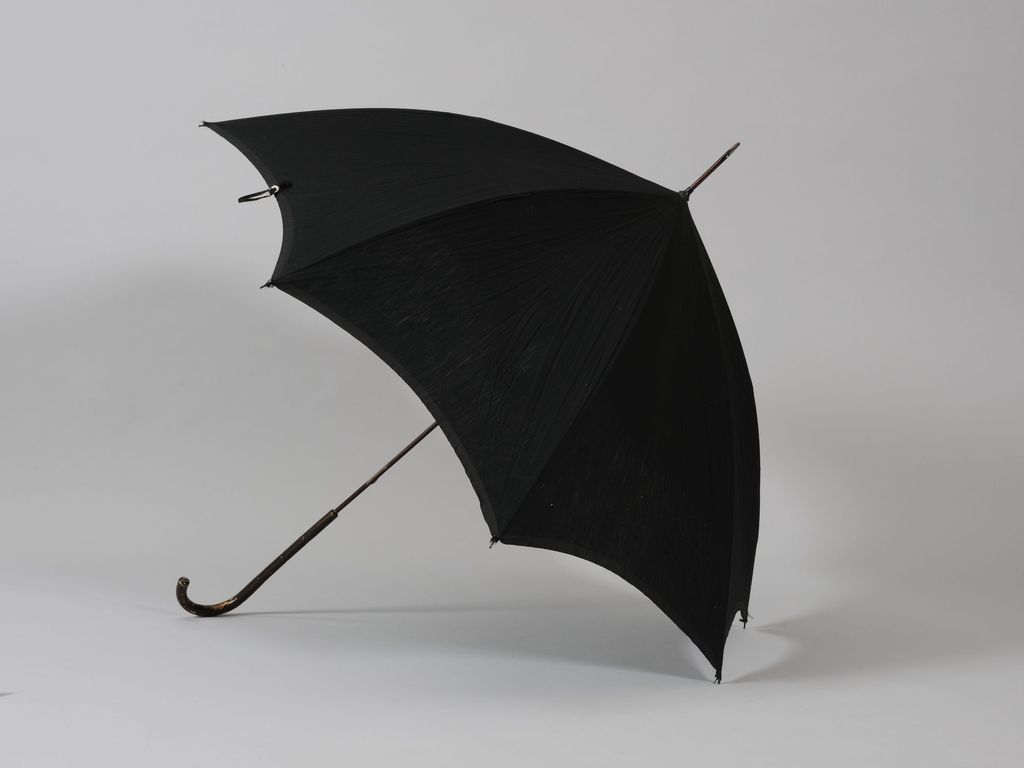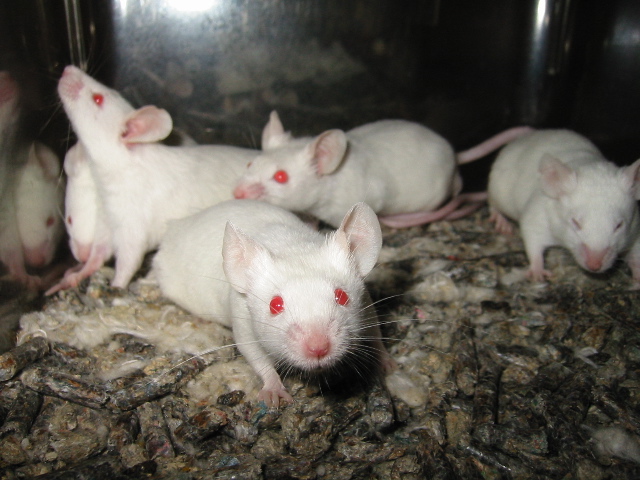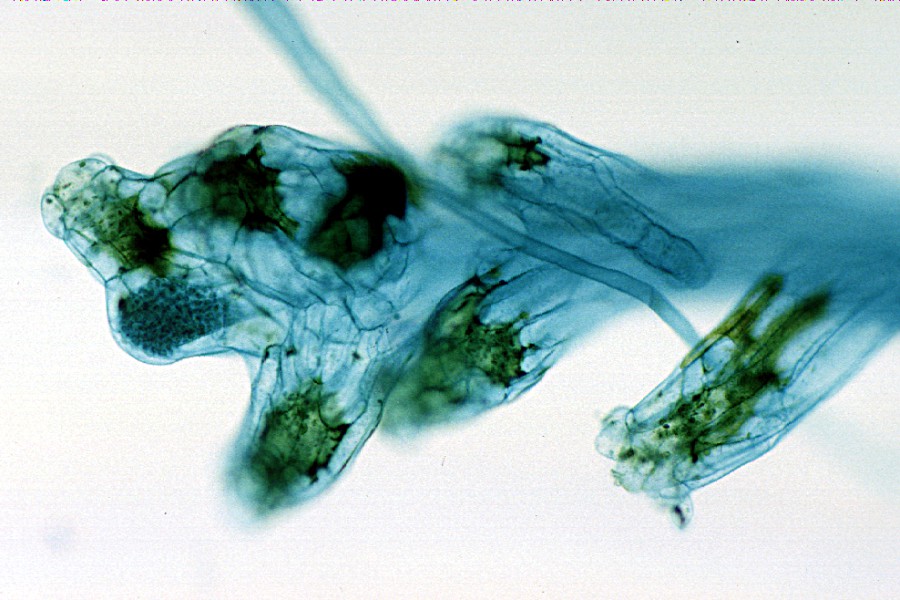|
Acetabularia Acetabulum
''Acetabularia acetabulum'', mermaid's wine glass, is a species of green alga in the family Polyphysaceae. It is found in the Mediterranean Sea at a depth of one to two metres. Description This alga adheres to the substrate with rhizoids (root-like processes), and these are the only part of the alga present in the winter. The thallus consists of a single cell, and in the spring a slender stem develops from the holdfast, growing vertically to a length of about . Growth is interrupted at intervals while a whorl of hairs develop which encircle the stem, branching dichotomously. As the stem lengthens and more whorls grow, the lower hairs drop off leaving behind a circular scar. When the stem is fully developed, a disc-shaped cap up to wide grows at the tip, the whole frond resembling a pale green parasol; further whorls of hairs grow from the upper surface of the cap. Biology Before cap expansion, the organism consists of a single cell with a single nucleus, located at the base of ... [...More Info...] [...Related Items...] OR: [Wikipedia] [Google] [Baidu] |
Carl Linnaeus
Carl Linnaeus (23 May 1707 – 10 January 1778), also known after ennoblement in 1761 as Carl von Linné,#Blunt, Blunt (2004), p. 171. was a Swedish biologist and physician who formalised binomial nomenclature, the modern system of naming organisms. He is known as the "father of modern Taxonomy (biology), taxonomy". Many of his writings were in Latin; his name is rendered in Latin as and, after his 1761 ennoblement, as . Linnaeus was the son of a curate and was born in Råshult, in the countryside of Småland, southern Sweden. He received most of his higher education at Uppsala University and began giving lectures in botany there in 1730. He lived abroad between 1735 and 1738, where he studied and also published the first edition of his ' in the Netherlands. He then returned to Sweden where he became professor of medicine and botany at Uppsala. In the 1740s, he was sent on several journeys through Sweden to find and classify plants and animals. In the 1750s and 1760s, he co ... [...More Info...] [...Related Items...] OR: [Wikipedia] [Google] [Baidu] |
Parasol
An umbrella or parasol is a folding canopy (building), canopy supported by wooden or metal ribs that is mounted on a wooden, metal, or plastic pole. It is usually designed to protect a person against rain. The term ''umbrella'' is traditionally used when protecting oneself from rain, while ''parasol'' is used when protecting oneself from sunlight, though the terms continue to be used interchangeably. Often the difference is the material used for the canopy; some parasols are not waterproof, and some umbrellas are Transparency and translucency, transparent. Umbrella canopies may be made of fabric or flexible plastic. There are also combinations of parasol and umbrella that are called ''en-tout-cas'' (French for "in any case"). Generally speaking, parasols and umbrellas are small, handheld, personal use items. Golf umbrellas are the biggest hand-portable umbrellas available. There are two types of umbrellas: completely collapsible umbrellas, which can be folded up into a small en ... [...More Info...] [...Related Items...] OR: [Wikipedia] [Google] [Baidu] |
Developmental Biology
Developmental biology is the study of the process by which animals and plants grow and develop. Developmental biology also encompasses the biology of Regeneration (biology), regeneration, asexual reproduction, metamorphosis, and the growth and differentiation of stem cells in the adult organism. Perspectives The main processes involved in the embryogenesis, embryonic development of animals are: tissue patterning (via regional specification and patterned cellular differentiation, cell differentiation); tissue growth; and tissue morphogenesis. * Regional specification refers to the processes that create the spatial patterns in a ball or sheet of initially similar cells. This generally involves the action of cytoplasmic determinants, located within parts of the fertilized egg, and of inductive signals emitted from signaling centers in the embryo. The early stages of regional specification do not generate functional differentiated cells, but cell populations committed to developing ... [...More Info...] [...Related Items...] OR: [Wikipedia] [Google] [Baidu] |
Model Organism
A model organism is a non-human species that is extensively studied to understand particular biological phenomena, with the expectation that discoveries made in the model organism will provide insight into the workings of other organisms. Model organisms are widely used to research human disease when human experimentation would be unfeasible or unethical. This strategy is made possible by the common descent of all living organisms, and the conservation of metabolic and developmental pathways and genetic material over the course of evolution. Research using animal models has been central to most of the achievements of modern medicine. It has contributed most of the basic knowledge in fields such as human physiology and biochemistry, and has played significant roles in fields such as neuroscience and infectious disease. The results have included the near- eradication of polio and the development of organ transplantation, and have benefited both humans and animals. From 19 ... [...More Info...] [...Related Items...] OR: [Wikipedia] [Google] [Baidu] |
Chloroplast
A chloroplast () is a type of membrane-bound organelle, organelle known as a plastid that conducts photosynthesis mostly in plant cell, plant and algae, algal cells. Chloroplasts have a high concentration of chlorophyll pigments which capture the Radiant energy, energy from sunlight and convert it to chemical energy and release oxygen. The chemical energy created is then used to make sugar and other organic molecules from carbon dioxide in a process called the Calvin cycle. Chloroplasts carry out a number of other functions, including fatty acid synthesis, amino acid synthesis, and the immune response in plants. The number of chloroplasts per cell varies from one, in some unicellular algae, up to 100 in plants like ''Arabidopsis'' and wheat. Chloroplasts are highly dynamic—they circulate and are moved around within cells. Their behavior is strongly influenced by environmental factors like light color and intensity. Chloroplasts cannot be made anew by the plant cell and must ... [...More Info...] [...Related Items...] OR: [Wikipedia] [Google] [Baidu] |
Unicellular Organism
A unicellular organism, also known as a single-celled organism, is an organism that consists of a single cell, unlike a multicellular organism that consists of multiple cells. Organisms fall into two general categories: prokaryotic organisms and eukaryotic organisms. Most prokaryotes are unicellular and are classified into bacteria and archaea. Many eukaryotes are multicellular, but some are unicellular such as protozoa, unicellular algae, and unicellular fungi. Unicellular organisms are thought to be the oldest form of life, with early organisms emerging 3.5–3.8 billion years ago. Although some prokaryotes live in colonies, they are not specialised cells with differing functions. These organisms live together, and each cell must carry out all life processes to survive. In contrast, even the simplest multicellular organisms have cells that depend on each other to survive. Most multicellular organisms have a unicellular life-cycle stage. Gametes, for example, are reprodu ... [...More Info...] [...Related Items...] OR: [Wikipedia] [Google] [Baidu] |
Mullus Surmuletus, Vlachorema, Pelion Imported From INaturalist Photo 80500076
''Mullus'' is a subtropical marine genus of ray-finned fish of the family Mullidae (goatfish) and includes the red mullets, occurring mainly in the southwest Atlantic near the South American coast and in the Eastern Atlantic including the Mediterranean and the Black Sea. These fish are benthic and can be found resting and feeding over soft substrates. Distribution Members of the genus ''Mullus'' can be found in the Atlantic Ocean, including the Mediterranean Sea. They are often found over soft substrates, such as sand, in which they search for prey using sensitive whiskers. Species There are currently four recognized species in this genus: Commercial Significance The most commercially important of these species is the Red Mullet (''M. barbatus'') which is common in Mediterranean cuisine and often fished for using seine nets, a practice thought to be damaging as it can remove large numbers of spawning Spawn is the Egg cell, eggs and Spermatozoa, sperm released or depo ... [...More Info...] [...Related Items...] OR: [Wikipedia] [Google] [Baidu] |
Zygote
A zygote (; , ) is a eukaryote, eukaryotic cell (biology), cell formed by a fertilization event between two gametes. The zygote's genome is a combination of the DNA in each gamete, and contains all of the genetic information of a new individual organism. The sexual fusion of haploid cells is called karyogamy, the result of which is the formation of a Ploidy#Haploid and monoploid, diploid cell called the zygote or zygospore. History German zoologists Oscar Hertwig, Oscar and Richard Hertwig made some of the first discoveries on animal zygote formation in the late 19th century. In multicellular organisms The zygote is the earliest developmental stage. In humans and most other Anisogamy, anisogamous organisms, a zygote is formed when an egg cell and sperm, sperm cell come together to create a new unique organism. The formation of a cell potency, totipotent zygote with the potential to produce a whole organism depends on epigenetics, epigenetic reprogramming. DNA demethyla ... [...More Info...] [...Related Items...] OR: [Wikipedia] [Google] [Baidu] |
Gamete
A gamete ( ) is a Ploidy#Haploid and monoploid, haploid cell that fuses with another haploid cell during fertilization in organisms that Sexual reproduction, reproduce sexually. Gametes are an organism's reproductive cells, also referred to as sex cells. The name gamete was introduced by the German cytologist Eduard Strasburger in 1878. Gametes of both mating individuals can be the same size and shape, a condition known as isogamy. By contrast, in the majority of species, the gametes are of different sizes, a condition known as anisogamy or heterogamy that applies to humans and other mammals. The human ovum has approximately 100,000 times the volume of a single human sperm cell. The type of gamete an organism produces determines its sex and sets the basis for the sexual roles and sexual selection. In humans and other species that produce two Morphology (biology), morphologically distinct types of gametes, and in which Gonochorism, each individual produces only one type, a femal ... [...More Info...] [...Related Items...] OR: [Wikipedia] [Google] [Baidu] |
Cytoplasm
The cytoplasm describes all the material within a eukaryotic or prokaryotic cell, enclosed by the cell membrane, including the organelles and excluding the nucleus in eukaryotic cells. The material inside the nucleus of a eukaryotic cell and contained within the nuclear membrane is termed the nucleoplasm. The main components of the cytoplasm are the cytosol (a gel-like substance), the cell's internal sub-structures, and various cytoplasmic inclusions. In eukaryotes the cytoplasm also includes the nucleus, and other membrane-bound organelles.The cytoplasm is about 80% water and is usually colorless. The submicroscopic ground cell substance, or cytoplasmic matrix, that remains after the exclusion of the cell organelles and particles is groundplasm. It is the hyaloplasm of light microscopy, a highly complex, polyphasic system in which all resolvable cytoplasmic elements are suspended, including the larger organelles such as the ribosomes, mitochondria, plant plasti ... [...More Info...] [...Related Items...] OR: [Wikipedia] [Google] [Baidu] |
Gametangium
A gametangium (: gametangia) is a sex organ or cell in which gametes are produced that is found in many multicellular protists, algae, fungi, and the gametophytes of plants. In contrast to gametogenesis in animals, a gametangium is a haploid structure and formation of gametes does not involve meiosis. Types of gametangia Depending on the type of gamete produced in a gametangium, several types can be distinguished. Female Female gametangia are most commonly called archegonia. They produce egg cells and are the sites for fertilization. Archegonia are common in algae and primitive plants as well as gymnosperms. In flowering plants, they are replaced by the embryo sac inside the ovule. Male The male gametangia are most commonly called antheridia. They produce sperm cells that they release for fertilization. Antheridia producing non-motile sperm (spermatia) are called spermatangia. Some antheridia do not release their sperm. For example, the oomycete antheridium is a sy ... [...More Info...] [...Related Items...] OR: [Wikipedia] [Google] [Baidu] |
Ploidy
Ploidy () is the number of complete sets of chromosomes in a cell, and hence the number of possible alleles for autosomal and pseudoautosomal genes. Here ''sets of chromosomes'' refers to the number of maternal and paternal chromosome copies, respectively, in each homologous chromosome pair—the form in which chromosomes naturally exist. Somatic cells, tissues, and individual organisms can be described according to the number of sets of chromosomes present (the "ploidy level"): monoploid (1 set), diploid (2 sets), triploid (3 sets), tetraploid (4 sets), pentaploid (5 sets), hexaploid (6 sets), heptaploid or septaploid (7 sets), etc. The generic term polyploid is often used to describe cells with three or more sets of chromosomes. Virtually all sexually reproducing organisms are made up of somatic cells that are diploid or greater, but ploidy level may vary widely between different organisms, between different tissues within the same organism, and at different stages in an o ... [...More Info...] [...Related Items...] OR: [Wikipedia] [Google] [Baidu] |






